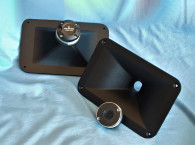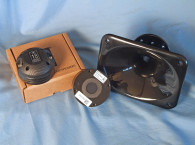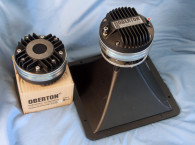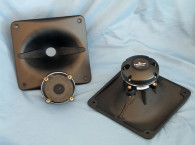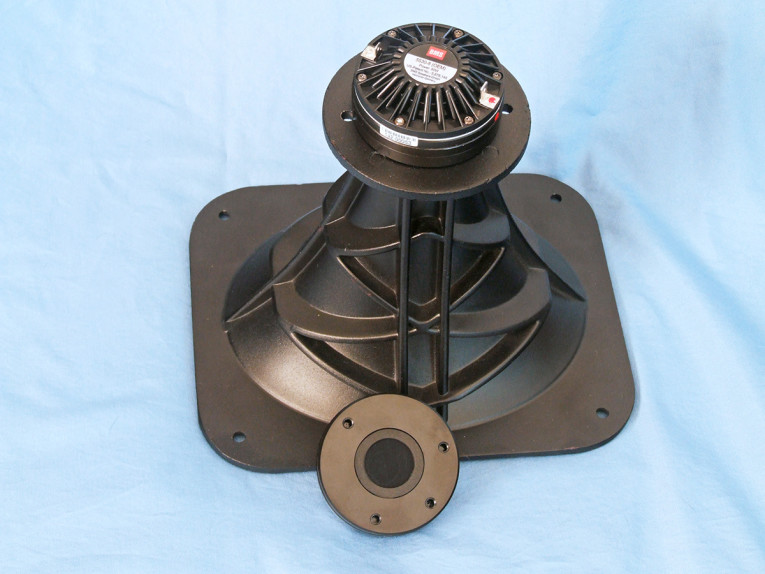
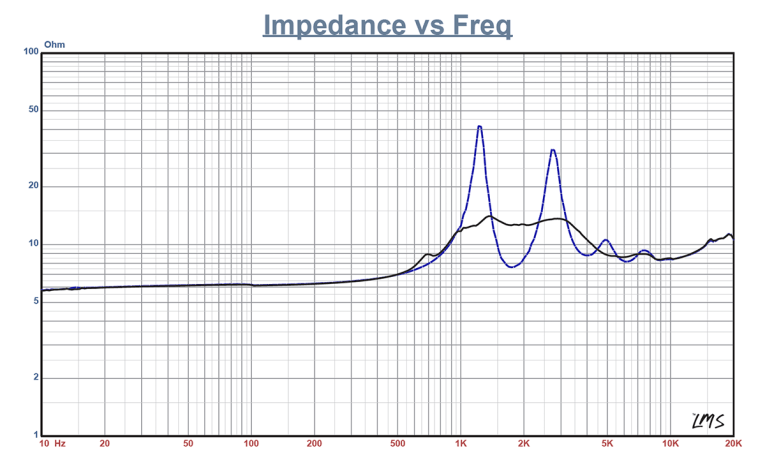
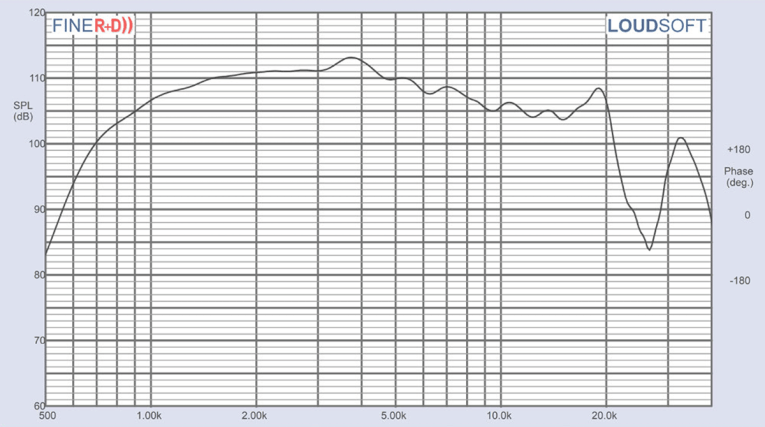
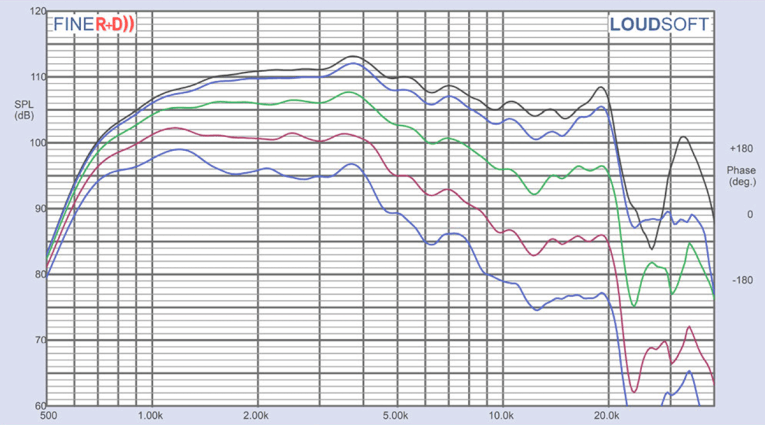
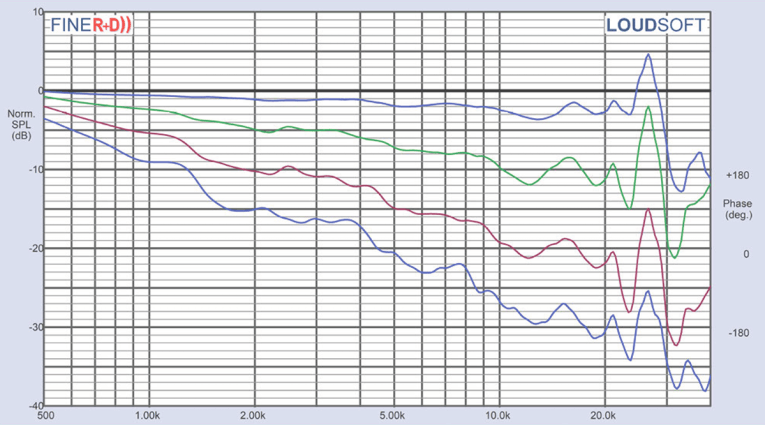
Other features include a FEA-optimized neodymium magnet motor structure, a continuous AES-rated power handling of 80 W with a peak power handling of 450 W, a 1 kHz recommended crossover frequency, and 1 W/1 m 117 dB sensitivity measured in a plane wave tube, and 113 dB measured with a 90° × 75° horn. This patented design’s designated applications include use in a high output point source, in high output line arrays, and in high output beam steering arrays. In an array with the 5530ND drivers spaced 72 mm apart, the crossover frequency can be dropped to 850 Hz, which is quite low for a 1” compression driver.
Since this is a recently released design for BMS, there isn’t a BMS 1” horn available as yet. Given this, I used a Faital Pro LTH102 cast-aluminum Elliptical Tractrix 1” horn with a 60° × 50° coverage pattern and a recommended crossover frequency of 1 kHz — perfect for the BMS 5530ND compression driver.
I began testing by using the LinearX LMS analyzer to produce the 300-point stepped sine wave impedance plot shown in Figure 1, with the solid black curve showing the 5530ND mounted on the LTH102 horn and the dashed blue curve representing the compression driver without the horn. With a nominal 8 Ω impedance (the 5530 is also available in 16 Ω), the 5530ND had 6.18 Ω DCR (Re), with a minimum impedance mounted on the LTH102 horn of 8.36 Ω and at 8.7 kHz.
For the next measurements, I free-air mounted the BMS 5530ND/LTH102 combination without an enclosure and measured both the horizontal on and off axis at 2.0 V/0.5 m (normalized to 2.83 V/1 m) from 0° on-axis to 60° off-axis using the Loudsoft FINE R+D analyzer and GRAS 46BE microphone (supplied courtesy of Loudsoft and GRAS Sound & Vibration). Note: I only measured the horizontal plane because the LTH102 has appeared in Test Bench reviews previously, however, if you are curious about the LTH102’s vertical response, I included a vertical polar plot.
Figure 2 shows the on-axis frequency response of the compression driver/horn, which is relatively smooth with no major anomalies from the 1 kHz recommended crossover frequency to about 20 kHz, with the typical downward sloping response of an elliptical horn. Figure 3 shows the 0° to 60° on- and off-axis response in the horizontal plane. Figure 4 shows the normalized horizontal plane response.
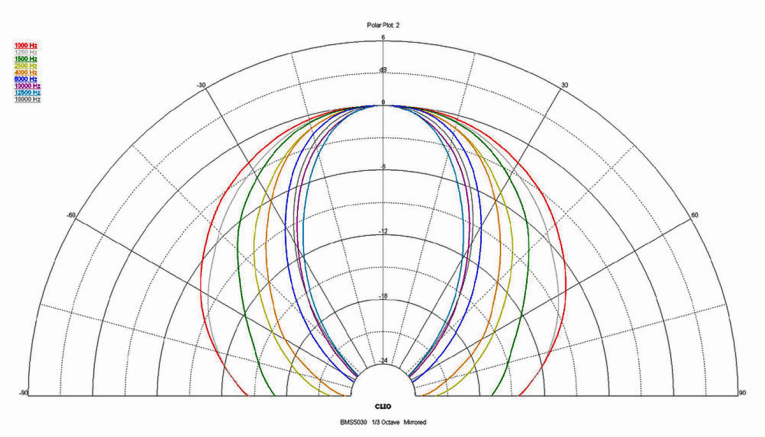

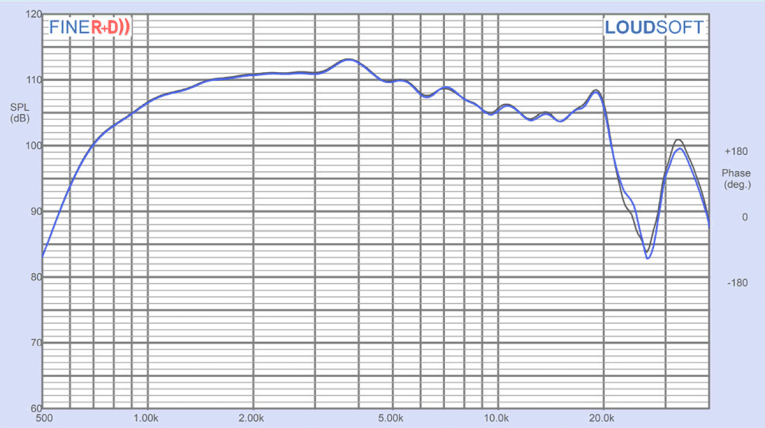
Figure 5 shows the 180° horizontal plane polar plot (in 10° increments with 1/3 octave smoothing applied), which was generated by the CLIO Pocket analyzer and accompanying microphone (courtesy of Audiomatica SRL). Figure 6 shows the CLIO Pocket-generated 180° vertical plane polar plot (also with 10° increments with 1/3 octave smoothing applied).
Last, Figure 7 illustrates the two-sample SPL comparison showing the two BMS 5530ND compression driver samples to be closely matched within 0.25 dB or less throughout their entire operating range. I again set up the Listen, Inc. AudioConnect analyzer and 1/4” SCM microphone (provided by Listen, Inc.) to measure distortion and generate time-frequency plots. For the distortion measurement, the BMS 5530ND/LTH102 combination was again mounted in free-air in the same manner as was used for the frequency response measurements, and the SPL was set to 104 dB at 1 m (1.26 V, determined by using a pink noise stimulus generator and internal SLM in the SoundCheck 17 software). The distortion was measured with the Listen microphone placed 10 cm from the mouth of the horn. This produced the distortion curves shown in Figure 8.
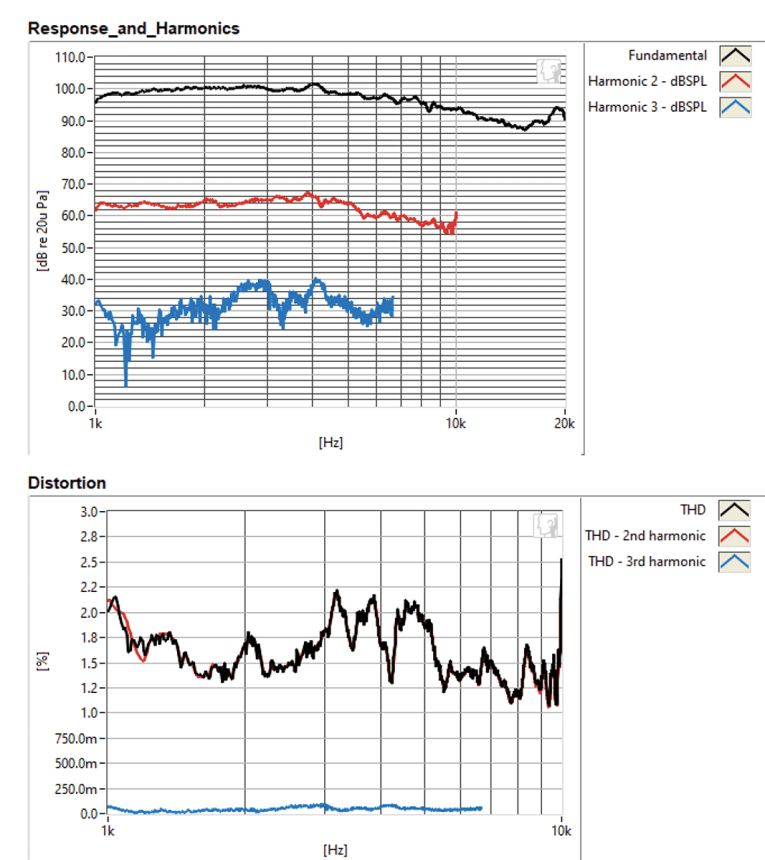


I then set up SoundCheck 17 to generate a 2.83 V/1 m impulse response curve for this driver/horn and imported the data into Listen’s SoundMap Time/Frequency software. Figure 9 shows the resulting cumulative spectral decay (CSD) waterfall plot. Figure 10 shows the Short Time Fourier Transform (STFT) plot.
When you examine all the data I took on the BMS 5530ND, it’s obvious that this is very well-designed product with some appropriate trade-offs resulting in an interesting new choice for a 1” compression driver, especially in arrays. For more on the 5530ND (there is also a screw-in version, the 5531ND), visit www.bmsspeakers.com. VC
This article was originally published in Voice Coil, December 2019.




